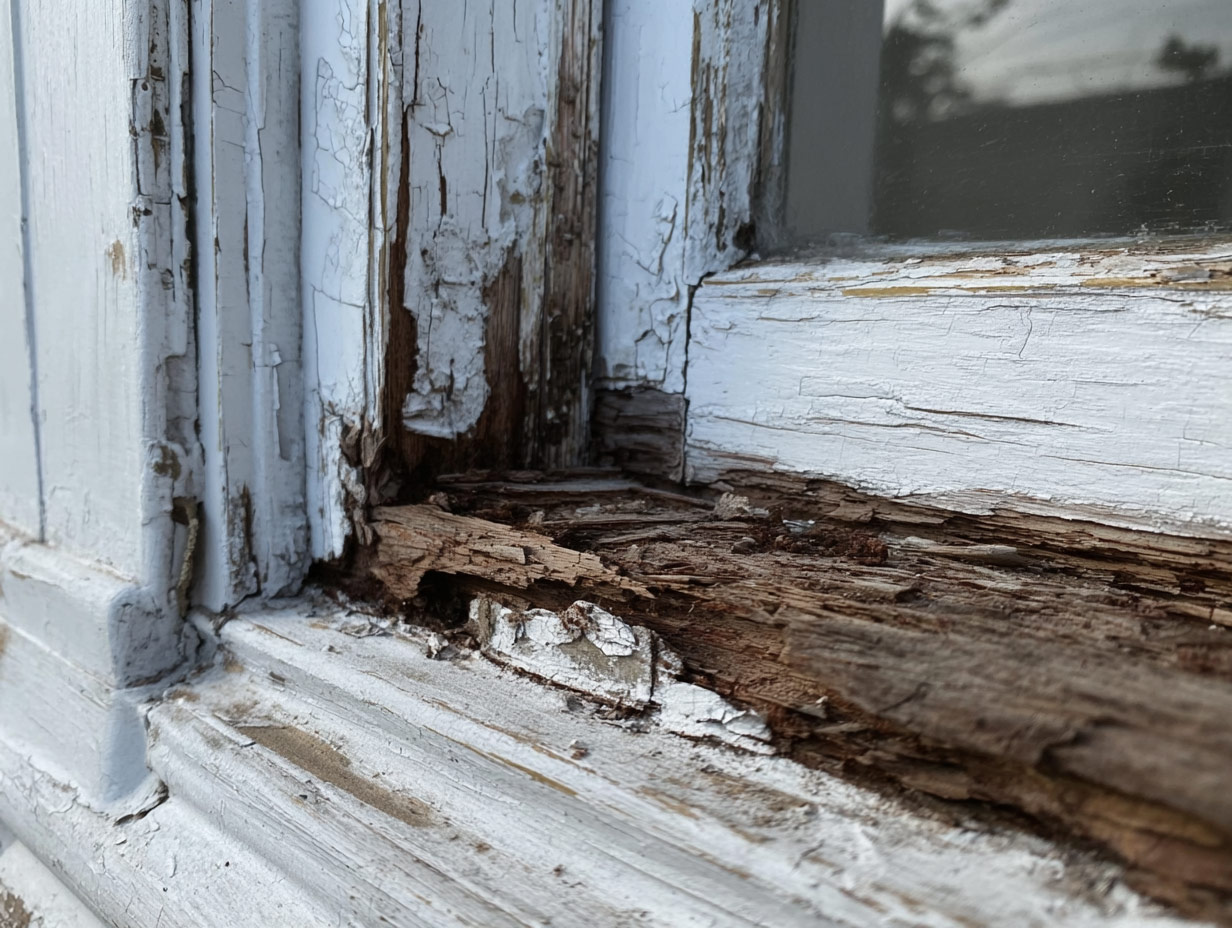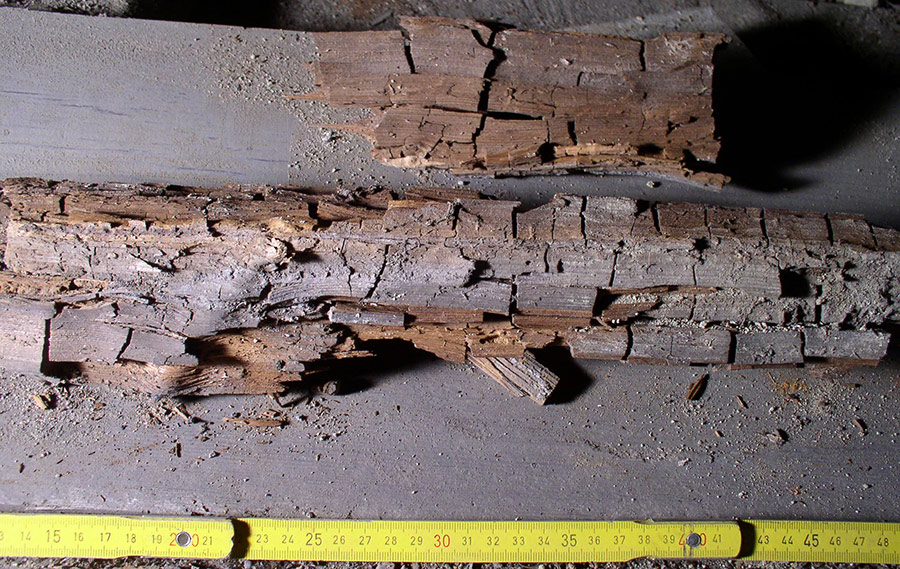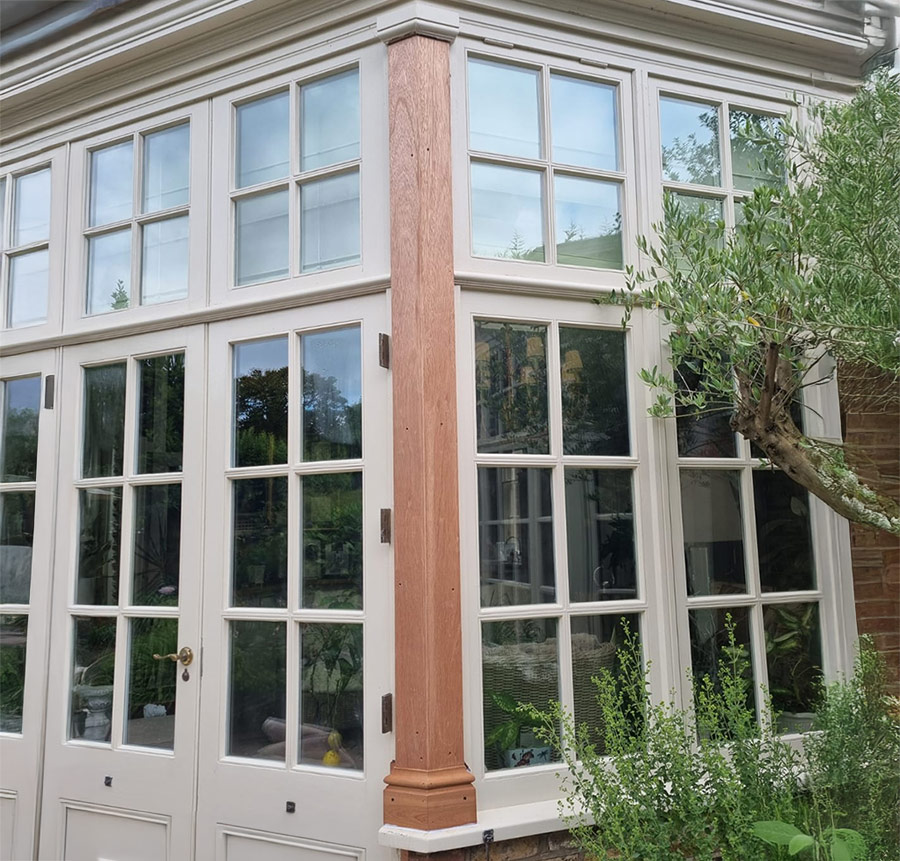How to Spot and Repair a Rotten Window Frame: A Complete Guide
A rotten window frame is a common problem in homes with timber windows. It often starts small, usually at the sill or joints, but left untreated it can spread and affect the strength of your window. Understanding how to spot and deal with rot early can save time, money, and effort.
This guide explains the signs of window frame rot, the types of rot you might encounter, and how to repair a rotten window frame safely. We’ll also cover options for DIY enthusiasts and when it might be best to seek professional help.

Signs of a Rotten Window Frame
Rot can be subtle at first. Watch out for these common indicators:
- Soft or spongy timber – Press gently on the sill or lower frame. If it feels soft, the wood is likely compromised.
- Peeling or bubbling paint – Moisture trapped under paint causes it to lift.
- Discolouration or mould – Fungi can appear as dark patches or spots on the wood.
- Crumbling wood – Rotten sections may flake away when touched.
- Musty smell – Damp, decaying wood often has a noticeable odour.
Rot often appears in the sill, bottom of the frame, and joints. If you notice one or more of these signs, it’s time to inspect the wood more closely.
Types of Rot: Wet Rot vs Dry Rot
Understanding the type of rot can help you decide how to tackle it.
Wet Rot
Wet rot is caused by persistent moisture exposure, often from leaks, condensation, or poor paint protection. It usually stays near the affected area, softening and darkening the wood. Minor wet rot can often be fixed with a DIY rotten window frame repair using a wood hardener and filler.
Dry Rot
Dry rot is more serious and spreads aggressively. You might see white, cotton-like fungus or deep cracks in the timber. Dry rot window repair requires careful removal of the affected timber and treatment of surrounding areas. While some experienced DIYers can handle small patches, dry rot often calls for professional attention to prevent it spreading further.

How to Repair a Rotten Window Frame
For minor damage, DIY repairs are possible. Here’s a step-by-step approach:
- Remove the Rotten Wood
Use a chisel or multi-tool to take out all decayed timber. Stop once you reach solid, healthy wood. - Treat the Remaining Timber
Apply a wood hardener to stabilise any weakened areas. This strengthens the timber and helps prevent future decay. - Fill the Gaps
Use a two-part epoxy wood filler to rebuild the missing sections. This works for rotted wood window frame repair, repairing a rotten window frame, and even for fixing a rotting door frame. - Sand, Prime, and Paint
Once the filler sets, sand smooth, apply primer, and finish with exterior-grade paint. This protects the repair and ensures a consistent finish.
For small repairs, kits are available that include hardener and filler, making DIY fixes more manageable.

When DIY Might Not Be Enough
If the damage is extensive, affecting more than 10–15% of the frame, or if you’re dealing with dry rot on a window frame that could spread, replacement or professional repair is usually safer. Signs that you may need help include:
- The frame is structurally weak or warped.
- Rot has spread beyond visible areas.
- Repaired sections keep failing.
- You notice window frame rotted in multiple places.
Even if you enjoy DIY, calling a professional for advice or inspection can save headaches in the long run.
Preventing Rotten Windows
Preventing rot is much easier than fixing it. Simple steps include:
- Keep paintwork in good condition and seal any cracks.
- Ensure proper drainage on sills to avoid standing water.
- Regularly inspect windows for soft spots, bubbling paint, or discolouration.
- Maintain good ventilation to reduce condensation inside the home.
Early attention can stop minor issues from becoming major problems.
Summary
Whether you want to repair a rotted casement window, handle a dry rot window repair, or tackle a rotted wood window frame repair yourself, this guide gives the knowledge to get started. Minor repairs are achievable with the right tools and materials, but don’t hesitate to seek professional help if the damage is extensive or the rot is persistent.
With careful attention and timely maintenance, you can keep your timber windows healthy and looking great for years to come.








